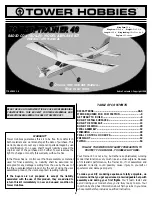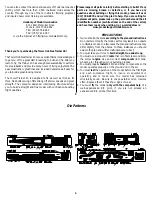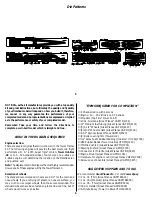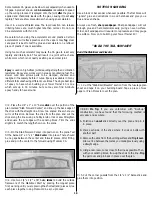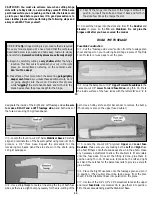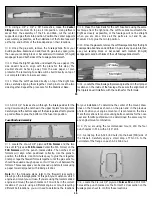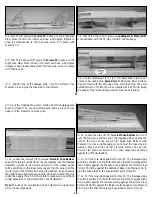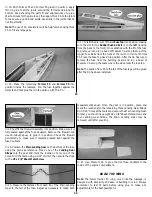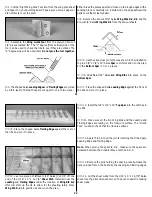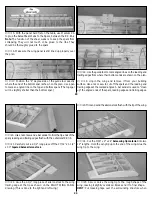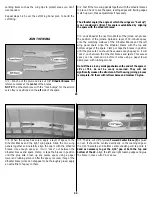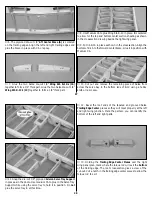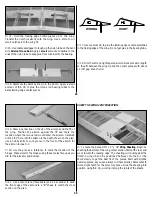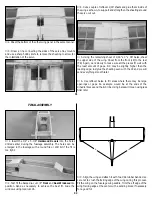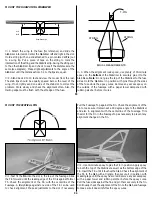
6
5
NOTE: We, as the kit manufacturer, provide you with a top quality
kit and great instructions, but ultimately the quality and flyability
of your finished model will depend on how you build it; therefore,
we cannot in any way guarantee the performance of your
completed model and no representations are expressed or implied
as to the performance or safety of your completed model.
Remember: Take your time and follow the directions to
complete a well-built model which is straight and true.
EARLY IN THE BUILDING SEQUENCE
Engine selection:
There are several engines that will work well in the Tower Trainer
40. The following engines will provide the best all-around flight
performance: O. S.
®
.40FX, Super Tigre
®
GS .40, Tower Hobbies
.40 or O. S. .52 Surpass (4-stroke). Your choice of a 2-stroke or
4-stroke engine will determine the location of the throttle servo
and pushrod exit.
Note: The displacement in bold type is the most highly recommended.
However, all of these engines will fly the Tower Trainer 40.
Selection of wheels
The standard recommended wheels are 2-1/2" for the main and
nose wheels. If you are flying off grass or an uneven surface, you
may wish to use larger wheels than those recommended. The
standard wheels have been tested on grass and work fine, but 3"
wheels would work even better.
“ITEMS REQUIRED FOR COMPLETION”
❍
4 Channel radio with 4 servos
❍
Engine: .40 - .46 2-stroke or .52 4-stroke
❍
Propeller (Top Flite
®
Power Point
®
)
❍
10 oz. Fuel tank (Great Planes
®
#GPMQ4104)
❍
12" Medium fuel tubing (Great Planes #GPMQ4131)
❍
(3) 2-1/2" Wheels (Great Planes #GPMQ4223)
❍
(6) 5/32" Wheel collars (Great Planes #GPMQ4306)
❍
2-1/2" Spinner (Great Planes #GPMQ4520)
❍
(2) Rolls covering film (TowerKote
™
)
❍
1/2" Latex Foam Rubber Padding (Hobbico
®
# HCAQ1050)
❍
#64 Rubber Bands (Tower Hobbies #TOWQ1220)
❍
Throttle Pushrod (Great Planes #GPMQ3716)
❍
Steering Pushrod (Great Planes #GPMQ3700)
❍
Connector for Throttle (Great Planes #GPMQ3840)
❍
Engine Mount (Great Planes #GPMG1061)
❍
Hardware for engine mount (Great Planes #GPMQ3509)
❍
Screw-Lock connectors (Great Planes #GPMQ3870)
SUGGESTED SUPPLIES AND TOOLS
We recommend Great Planes Pro
™
CA and Tower Epoxy
❍
2 oz. CA (Thin) (Great Planes #GPMR6003)
❍
2 oz. CA+(Medium) (Great Planes #GPMR6009)
❍
1 oz. CA- (Thick) (Great Planes #GPMR6014)
❍
CA Accelerator (Great Planes #GPMR6035)
❍
6-Minute Epoxy (Tower Hobbies #TOWR3300)
Die Patterns

